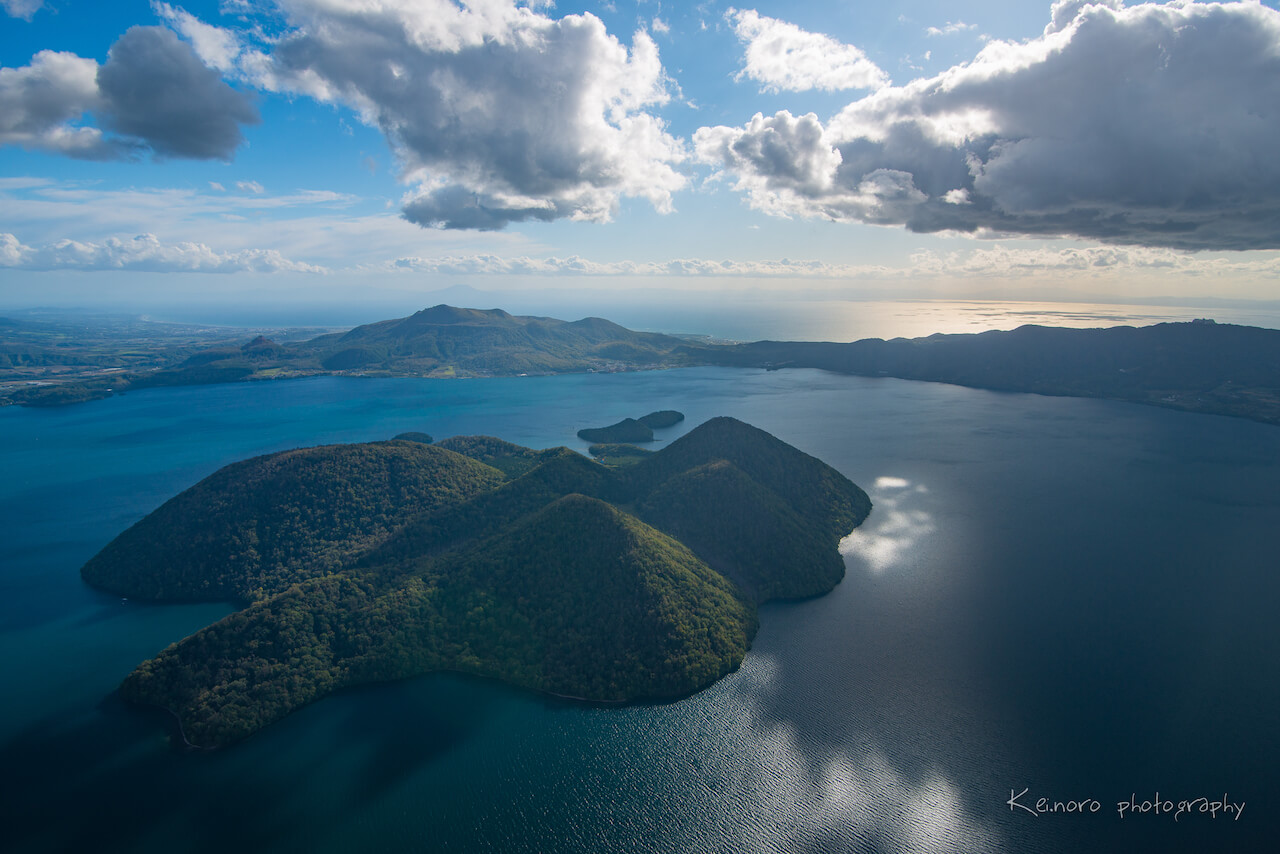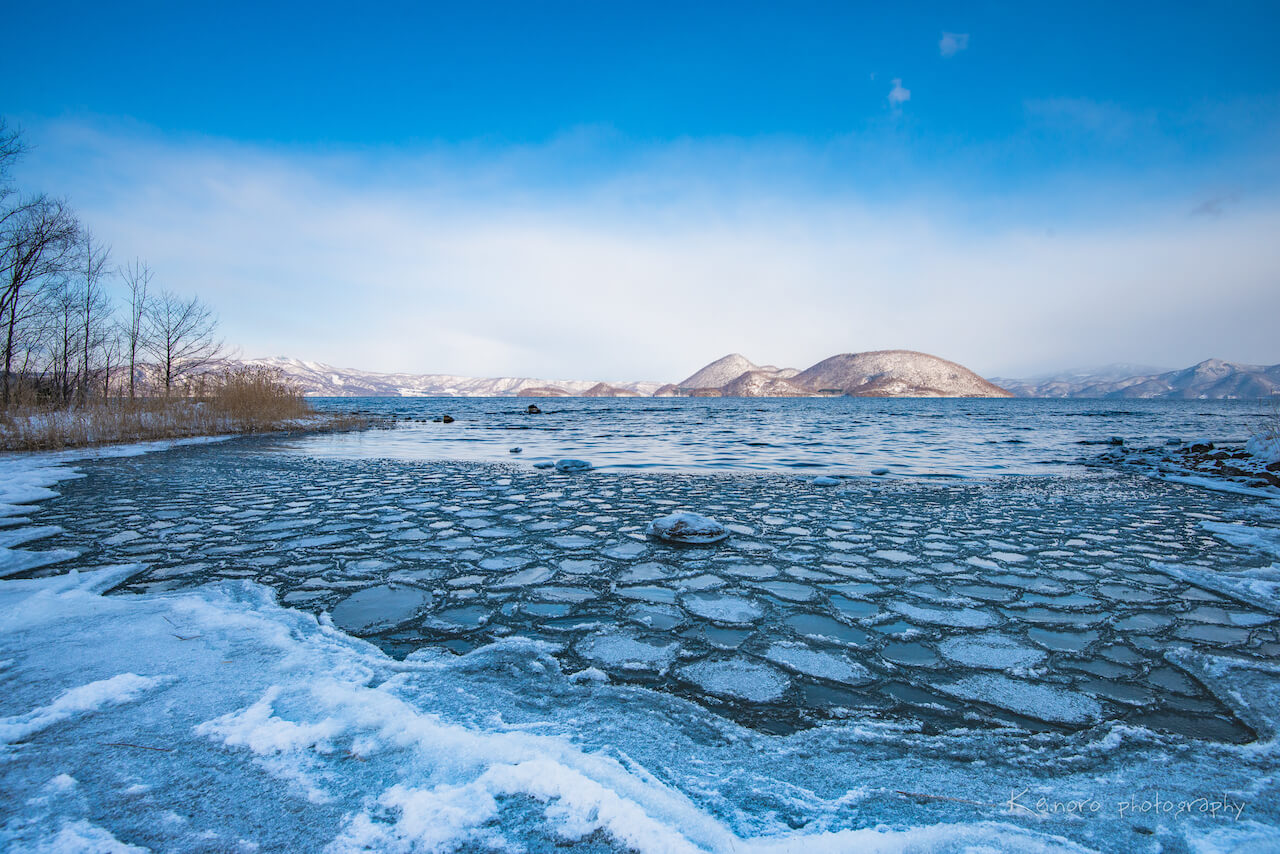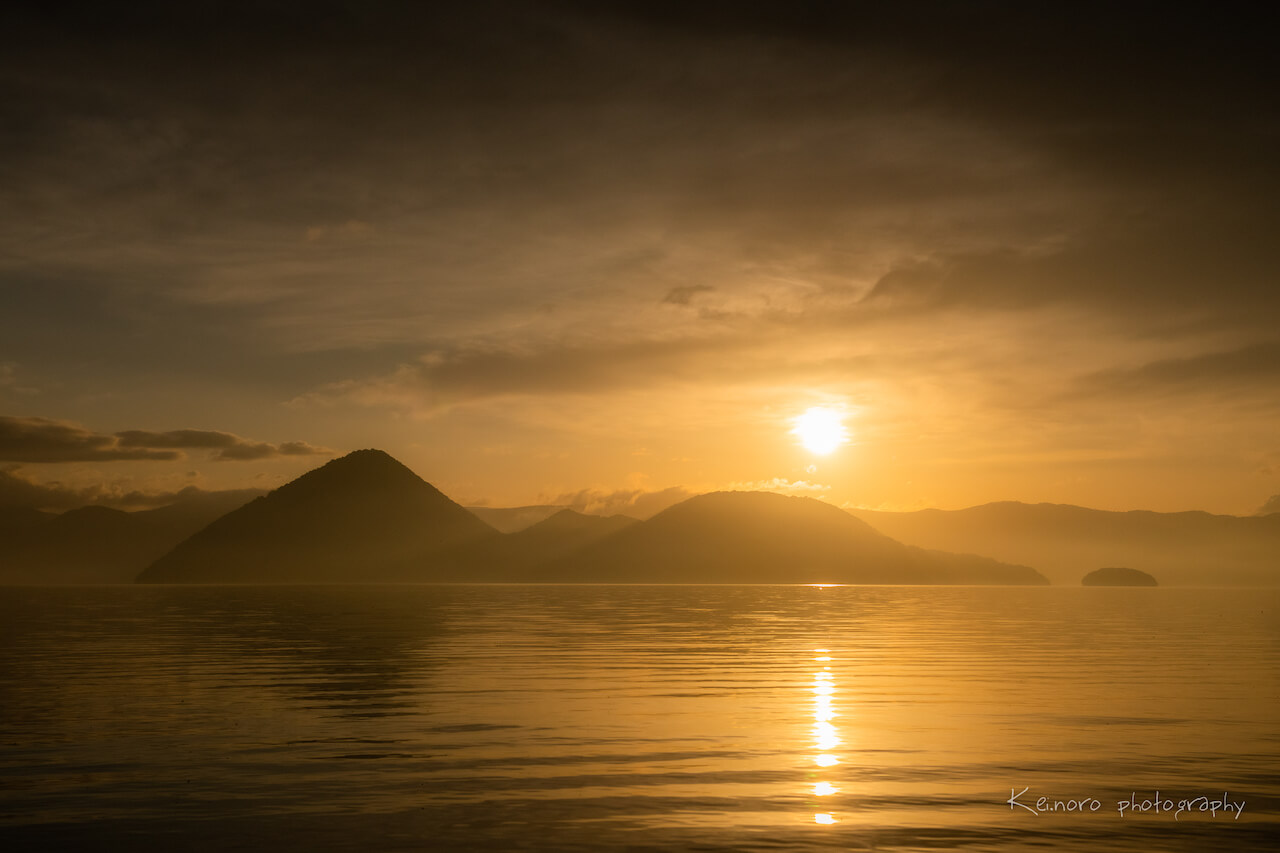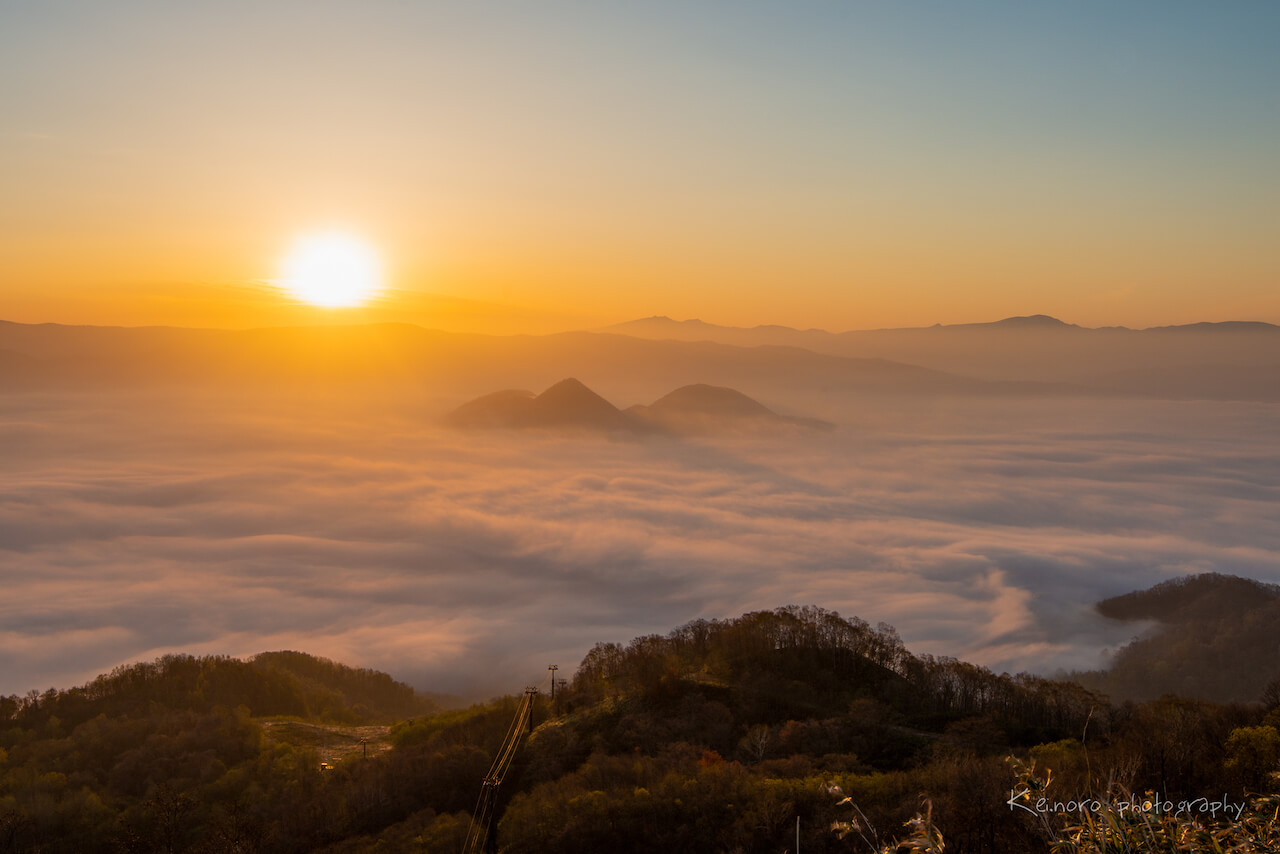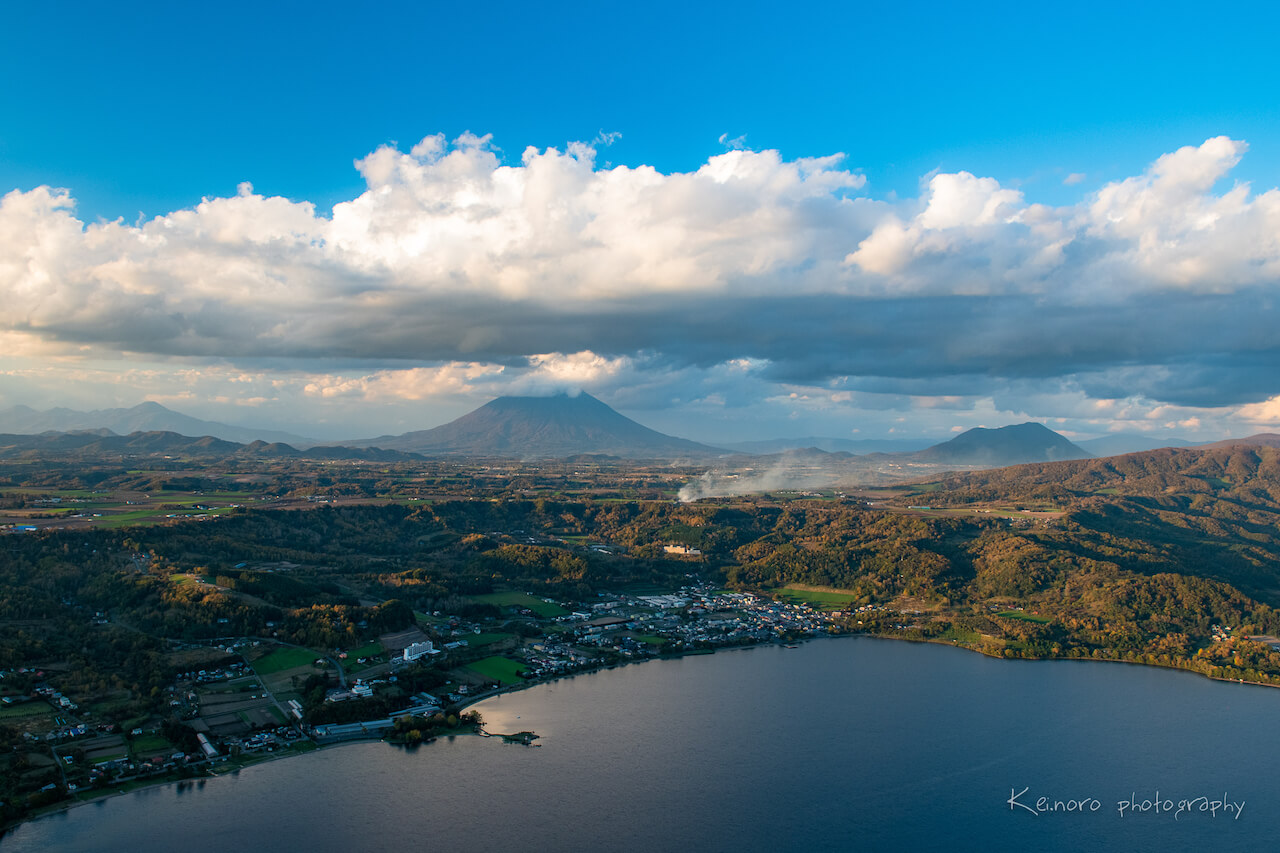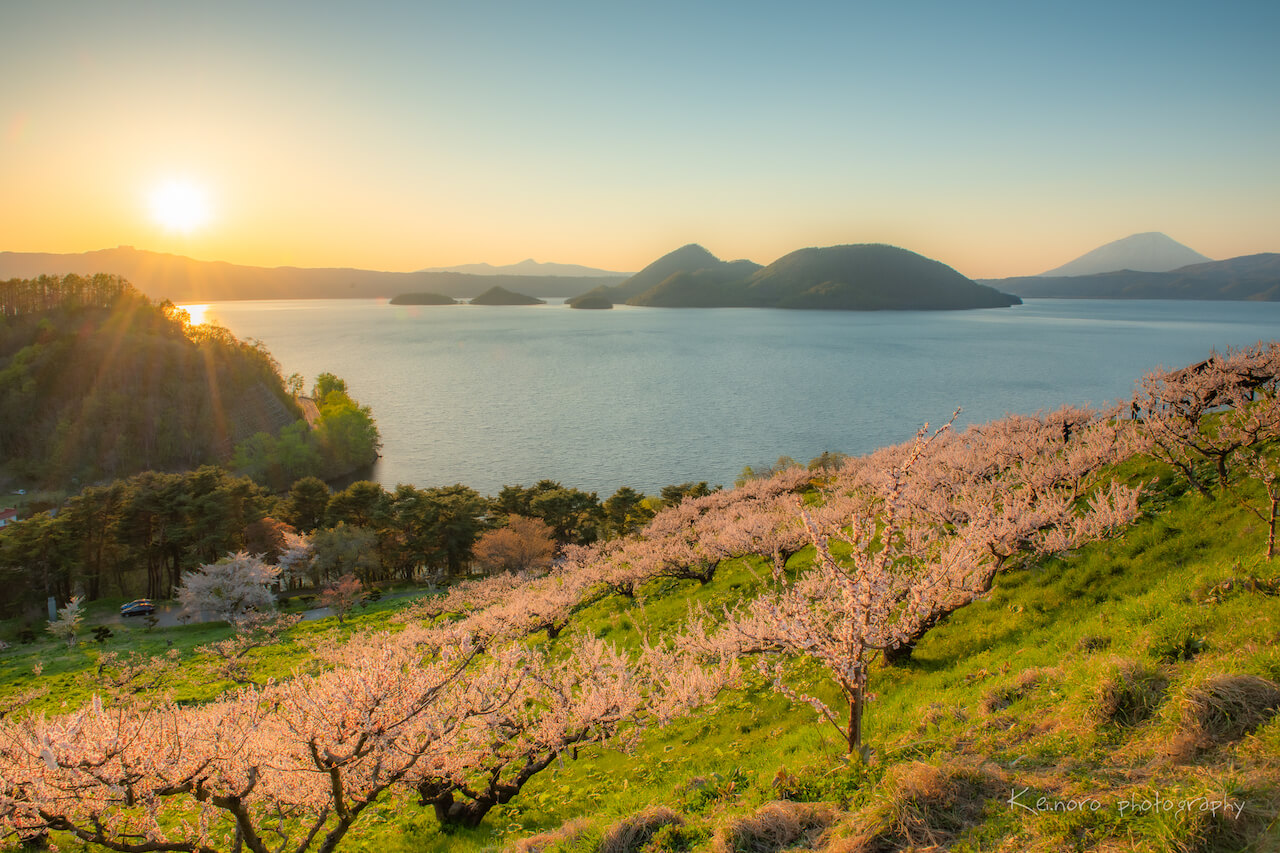
Located right in the center of the Shikotsu-Toya National Park, Lake Toya is a caldera lake that was created over ten thousand years ago as a result of volcanic activity. Today the area is registered as a UNESCO Global Geopark. Visitors can enjoy outdoor activities such as canoeing, as well as the local hot springs. Events such as firework nights are held throughout the year.
Noro Keiichi, a nature photographer from Lake Toya, explains how best to enjoy and capture the tremendous scenery of southwest Hokkaido, created by the eruptions of volcanoes that are still active even today.
Lake Toya, about a two-hour drive southwest of New Chitose Airport in Sapporo, is a caldera lake that was formed by an eruption that occurred about 110,000 years ago, and, along with other natural features in the surrounding area such as Mt. Usu—a volcano that is still active—the lake has been officially certified by UNESCO as the Toya-Usu UNESCO Global Geopark.
Travelling clockwise from the southeastern part of the 42 km wide lake, you will pass through the Sobetsu-town area, where you can feel the power of an active volcano surrounded by jagged rocks; the Toyako Onsen area, which prospers as a hot-spring resort; the Tsukiura area, which is known as a wine-producing region; and the Toyako area, with its pristine nature and countryside, dotted with campgrounds. With such a vast variety of landscapes to shoot, this region is particularly recommended for photographers.
“Lake Toya changes its appearance depending on the season and climate. When you take photographs, it can feel a bit like you’re searching for treasure,” says Noro Keiichi, a semi-professional photographer from Toyako-town.
Noro, who aims his camera at Lake Toya almost every morning before going to work, especially recommends as a shooting location, “Lake Toya in the morning, as seen from the Tsukiura area.”
“Tsukiura is located on the west side, so from there you can take pictures of the rising sun face-on. I often see photographs in guidebooks of Lake Toya set against a backdrop of white clouds in a blue sky, but I prefer Lake Toya in the morning, when it is covered with haze. The beautiful sky is reflected in the surface of the lake, which, when combined with the powerful image of the rising sun, makes for a fantastic landscape.”
Tsukiura is also a spot where, from spring to autumn, you can see a natural phenomenon known as the “sea of clouds”.
“Lake Toya is close to the sea and Mt. Yotei, which is also known as Ezo Fuji for its resemblance to Japanʼs highest mountain. Since the mountains and the sea are close to each other, and the temperature difference is extreme, a sea of clouds is likely to occur from spring to summer. There are many people who aim to photograph the sea of clouds from the observation deck of Mt. Poromoi, or the Silo observatory. I also recommend visiting these observatories during the day when the sea of clouds is not visible, as they offer an unrestricted view of Lake Toya.”
Lake Toya is surrounded by volcanoes such as Mt. Usu and Mt. Showa Shinzan, which are still active to this day. Although there is a risk of volcanic eruption, the land is enriched by various “volcanic blessings”, such as volcano-fed hot springs, fertile land where vegetables and fruit are grown, and seafood caught off a coast created by pyroclastic flows (flows of volcanic matter).
Maybe the scenery Iʼm currently photographing will change due to an eruption ten years from now. By recording this scenery with my camera, the next generation may see my work and understand, ʻIt was like this at that time.ʼ That is one of the reasons why I turn my lens to Lake Toya every day.”
Lake Toya may have changed its appearance by the next time you meet it, depending on the season, climate, and volcanic activity. Why not take your camera with you to encounter the once-in-a-lifetime scenery of this beautiful lake—a view of which, even if you look at it every day, you will never tire.
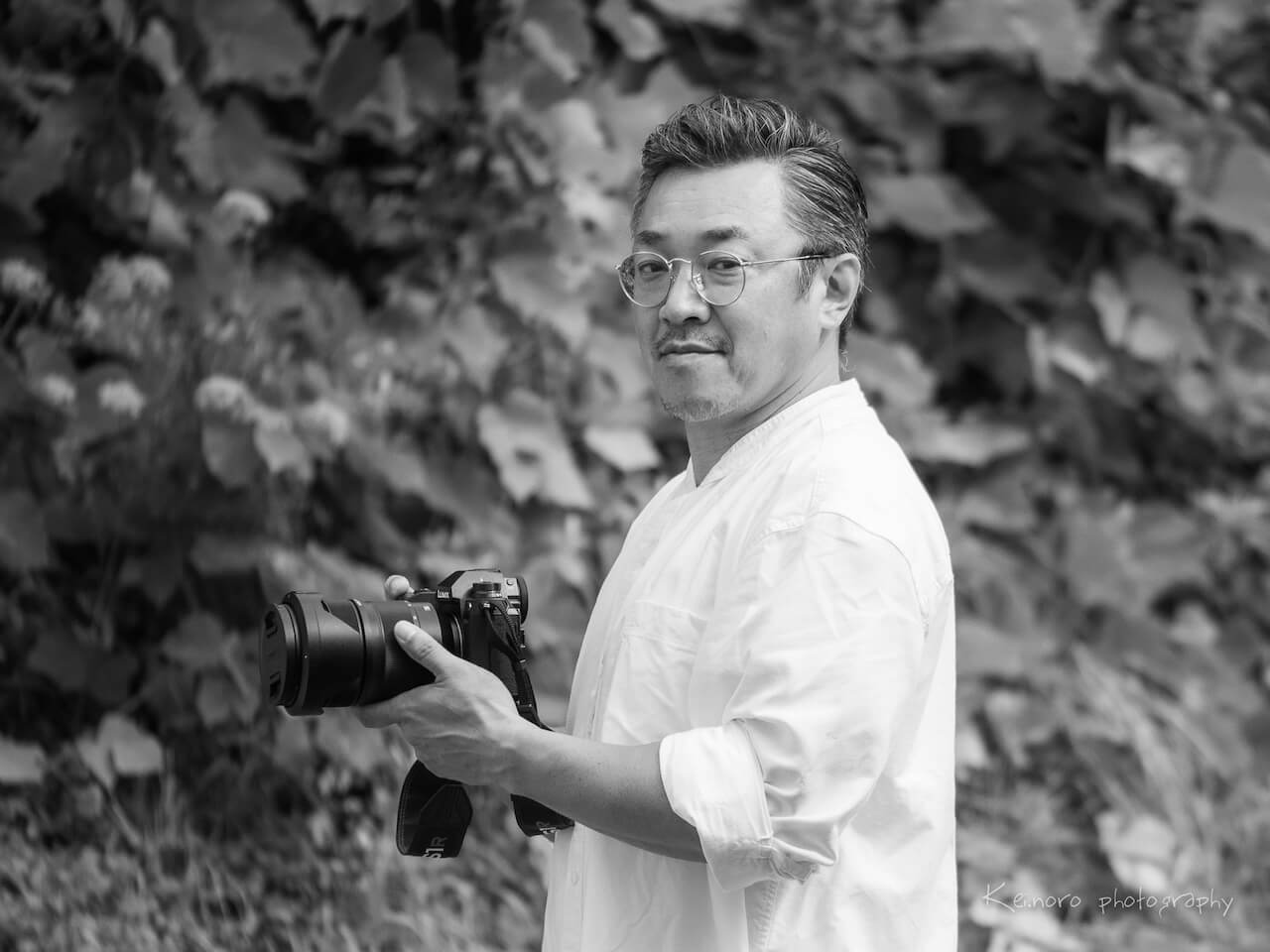
Noro Keiichi
Born in Abuta-town, Hokkaido (currently Toyako-town). First bought a single-lens reflex camera to photograph his newborn daughter. Formerly took portraits and baseball photographs, but in 2017, was transferred to the Toyako Onsen Tourist Association and started taking photographs of nature, including Lake Toya. Has won numerous awards for his works that, taking nature as their subject, engage the viewer with a compelling narrative.
